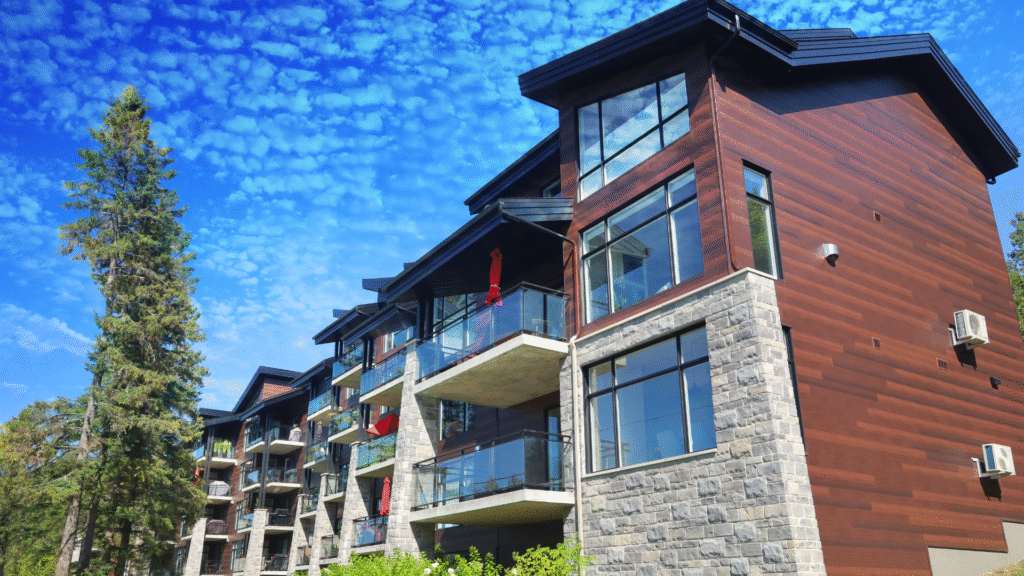Have you ever thought about how much time, money, and effort it takes to maintain a single-family rental property? Now imagine scaling that up a hundred times. Sounds overwhelming, right?
But here’s the thing—multifamily real estate actually becomes more profitable and less risky as you scale.
That’s the power of economies of scale. The larger the operation, the more efficient it becomes. In fact, running a 100-unit apartment complex can be easier and safer than managing just a handful of single-family homes.
Today, I’ll break down five key reasons why multifamily investing is the better long-term strategy for real estate investors who want to grow fast while minimizing risk.

Five Reasons Multifamily Investing is More Scalable and Less Risky
1. Lower Risk Through Scale
The biggest challenge with single-family homes is vacancy risk. If your one tenant moves out, 100% of your rental income is gone, and you’re stuck covering expenses until you find a new renter.
With multifamily properties, the risk is spread across many tenants. If you own a 100-unit apartment building, one or two vacancies don’t tank your cash flow—you’re still collecting rent from the other 98 units. That stability makes multifamily a safer long-term investment.
2. Location Efficiencies Keep Costs Down
Owning multiple rental properties in different locations creates management chaos. You need separate teams for maintenance, leasing, and property oversight—and that gets expensive.
With multifamily investing, especially when you own multiple buildings in the same market, you create location efficiencies. For example, in Atlanta, we own multiple properties near each other, which means:
- Shared staffing – If one property manager is out sick, another can step in without disruption.
- Streamlined operations – Leasing, maintenance, and oversight all run more smoothly when teams are centralized.
- Reduced costs – By managing properties within the same market, we eliminate unnecessary travel and duplication of efforts.
Simply put, concentration = efficiency = higher profits.
3. Shared Maintenance and Capital Expenditures (CapEx)
Think about this—if the roof starts leaking on a single-family home, that repair only benefits one tenant. But in a 100-unit apartment building, one repair benefits everyone.
The same logic applies to:
- Landscaping
- HVAC systems
- Parking lots
- Sidewalks
- Plumbing and electrical updates
Because repairs serve multiple tenants at once, multifamily investors spend less per unit on maintenance compared to single-family landlords. That’s a huge advantage when running a large portfolio.
4. Bulk Purchasing Power Saves Money
When you own just a few rental houses, you’re paying retail prices for everything—appliances, flooring, fixtures, even cleaning supplies. But when you own hundreds or thousands of units, you get bulk pricing.
For example:
- A light fixture might cost $80 for a single-family home.
- For a 100-unit apartment, we negotiate discounts down to $65 per unit.
A small savings per unit adds up fast across hundreds of apartments. Bulk discounts apply to everything—cabinets, paint, carpet, appliances—so the bigger your portfolio, the more profitable each unit becomes.
5. Centralized Management and Marketing
Single-family rentals require individual attention—separate ads, leasing agents, maintenance staff, and property managers for each house. That’s time-consuming and expensive.
Multifamily real estate centralizes everything:
- One leasing team markets all the units.
- One maintenance team handles all the repairs.
- One property manager oversees daily operations.
This efficiency means:
- Lower costs – One team manages multiple properties.
- Better tenant experience – Faster maintenance, better service.
- More consistent cash flow – Higher occupancy rates due to streamlined leasing.
The result? More profit and less stress for investors.
To learn more about the economies of scale for multifamily properties as a passive investor, click the link below to watch my full video.
Watch my full video here.
To your success,
Michael Blank

